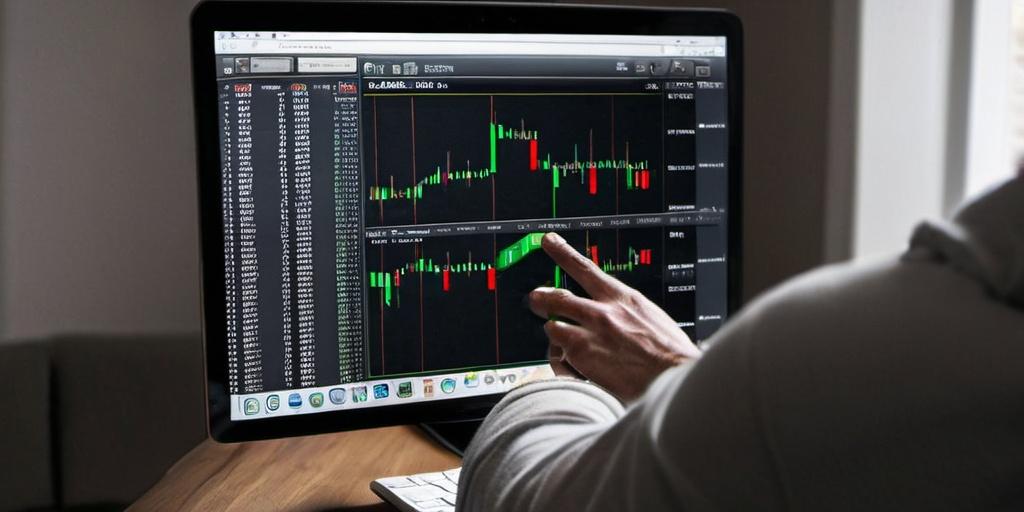An ETF, short for exchange-traded fund, is a pooled investment fund that trades on public stock exchanges. Investors buy shares of the ETF, and those shares represent fractional ownership of the fund’s underlying assets. These assets can include stocks, bonds, commodities, or a mix of them. Unlike mutual funds, ETFs trade like stocks, meaning they can be bought or sold throughout the trading day at fluctuating prices. This single difference—real-time trading—makes ETFs behave more like equity securities than the traditional pooled investments people used for decades prior.
This structure provides flexibility. Investors can react to market conditions during the day, set limit orders, and use trading strategies that are impossible with end-of-day priced mutual funds. Yet, despite the similarity in how ETFs and stocks are traded, the underlying mechanics of ETFs are far more complex and structured.

Index Tracking and Passive Exposure
Most ETFs are designed to track a market index. This could be something broad like the S&P 500 or more targeted like an energy sector index. Instead of trying to beat the market through active selection, these ETFs aim to match the performance of a benchmark by holding its components in the same proportions. Many don’t replicate the index exactly but use sampling strategies to approximate its returns while keeping costs low.
The goal here is low-cost, diversified exposure. That’s why many investors and advisors use ETFs as a core building block in long-term portfolios. Expense ratios are often fractions of what traditional mutual funds charge, and ETFs tend to have lower turnover, which means fewer taxable events. Passive index ETFs have become the default option for retirement accounts and robo-advisors, precisely because of their low-cost, no-frills design.
Not All ETFs Are Passive
The word “ETF” gets thrown around in ways that suggest all ETFs behave the same. They don’t. Many ETFs are actively managed, meaning there’s a fund manager or investment team selecting the holdings and trying to outperform a benchmark. These ETFs look identical on the surface—they have a ticker, they trade during the day—but what’s going on under the hood is very different.
Actively managed ETFs often come with higher fees, more turnover, and potentially greater volatility. They’re used for different reasons: sector rotation, thematic investing, short-term positioning, or exploiting inefficiencies in a specific market. For investors who only associate ETFs with passive investing, this can be a confusing shift.
How ETFs Are Created and Redeemed
The plumbing of ETFs is built around a process called creation and redemption. This isn’t something retail investors deal with directly, but it affects how ETFs behave. Large financial institutions called authorized participants (APs) are allowed to exchange a basket of securities—matching the ETF’s underlying portfolio—for newly created ETF shares. These shares are then sold on the open market. The reverse is also true: APs can return ETF shares and receive the underlying securities.
This mechanism keeps the market price of an ETF close to its net asset value (NAV). When prices drift too far from NAV, arbitrage opportunities emerge and are corrected by APs. This is one of the reasons ETFs are seen as more tax-efficient. The in-kind creation and redemption process helps avoid selling securities for cash inside the fund, which can trigger capital gains.
ETF Tax Benefits and Investor Implications
Tax efficiency is one of the more underappreciated aspects of ETFs. Unlike mutual funds, which often pass capital gains through to shareholders when underlying securities are sold, ETFs can avoid these distributions thanks to in-kind transfers. It doesn’t mean you won’t owe taxes—dividends are still taxed, and you’ll face capital gains when you sell your shares—but compared to actively managed mutual funds, ETFs can reduce unwanted tax events for long-term holders.
For taxable brokerage accounts, this feature can make a meaningful difference. Investors can hold broad-market ETFs for years without receiving surprise tax bills from fund turnover. It also makes ETFs appealing in tax-sensitive strategies, including tax-loss harvesting or income deferral.
Liquidity and Market Behavior
ETF liquidity is frequently misunderstood. Many investors assume that a low trading volume means low liquidity. But liquidity doesn’t just come from how often the ETF itself trades; it’s also tied to how liquid the underlying holdings are. An ETF that holds large-cap U.S. stocks might trade infrequently itself, but the ability to create or redeem shares keeps it liquid if demand increases.
That’s not always true for ETFs with thinly traded assets. Some bond ETFs, micro-cap stock ETFs, or niche commodity funds can behave unpredictably when market stress hits. Spreads widen. Discounts to NAV can increase. These are reminders that liquidity isn’t always guaranteed, especially for investors holding more exotic or leveraged ETFs during periods of volatility.
How ETFs Are Used in Real Portfolios
ETFs have grown from passive index trackers into a toolbox used by everyone from individual investors to institutional asset managers. Long-term investors use them to build portfolios with consistent asset allocation and automatic rebalancing. Financial advisors rely on them to lower costs and minimize tax events. Traders use sector and leveraged ETFs to express short-term views on interest rates, commodities, volatility, or geopolitical trends.
Their flexibility means ETFs can be used for almost anything. Exposure to foreign markets? There’s an ETF. Interest in clean energy or AI? Multiple options. Want to hedge against inflation, bet on volatility, or replicate a 60/40 portfolio with just a few trades? All possible using ETFs. But just because a fund exists doesn’t mean it makes sense to own it.
The Danger of Niche and Leveraged ETFs
As ETF providers compete for investor attention, product quality has taken a back seat to novelty. Funds now exist for nearly every investment theme or sector imaginable. Some track pet care companies, others follow blockchain or psychedelics, and a handful offer exposure to celebrity-branded indexes. Whether any of this benefits a portfolio is another matter.
More concerning are leveraged and inverse ETFs. These funds aim to deliver two or three times the return—or the opposite return—of an index over a single day. Their design resets daily, so holding them for long periods can produce wildly divergent results from what investors expect. In volatile markets, these products can lose money even if the underlying index finishes flat. Traders may use them tactically, but long-term investors who misunderstand how they compound often get burned.
ETFs During Market Stress
March 2020 was the moment many ETFs were tested in live fire. As financial markets seized up due to the pandemic, some bond ETFs began trading at large discounts to NAV. This led to criticism and speculation that ETFs were malfunctioning. In hindsight, the problem was that the underlying bond markets were illiquid, not the ETFs themselves. ETFs kept trading when the rest of the fixed income world was effectively frozen.
Far from being a failure, the ETF market provided real-time pricing in an environment where traditional securities didn’t. This episode changed the perception of ETFs from passive wrappers to potential sources of price discovery. It also demonstrated how ETFs can perform under pressure, although not without complexity or risk.
Commodity and Real Asset ETFs
Not all ETFs hold stocks or bonds. Some hold physical assets—gold bars, silver, industrial metals—and others gain exposure through futures contracts. Commodity ETFs give investors access to raw materials without owning or storing them. Real estate ETFs (REITs) offer indirect ownership in commercial properties, residential developments, and mortgage assets.
The structure of these funds varies, and so do their risks. For instance, oil ETFs using futures contracts can suffer from contango, where rolling contracts reduces returns. Gold ETFs backed by physical metal avoid this but have different storage and trust-related risks. Understanding how these funds operate—what they own, how they roll positions, and how they’re taxed—should be considered before investing.
Know the Product, Not Just the Ticker
The ETF boom has given investors more access, lower costs, and better tax outcomes. But it’s also flooded the market with products that range from helpful to hazardous. It’s easy to assume all ETFs are interchangeable, but they are not. Their design, holdings, costs, and trading mechanics vary, sometimes in ways that only show up in volatile markets.
Just because it trades like a stock doesn’t mean it acts like one. And just because it tracks an index doesn’t make it simple or safe. ETFs are not inherently good or bad—they are tools. Like any tool, their effectiveness depends on how well the user understands them and what job they’re meant to do.
To read more, visit our mainpage or review related entries on our index page.
